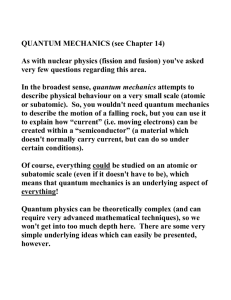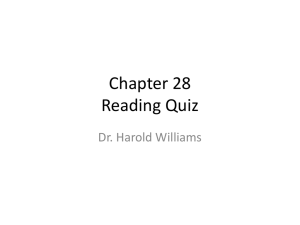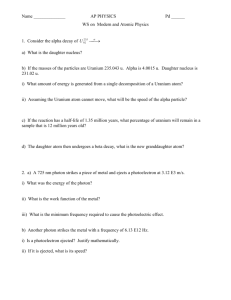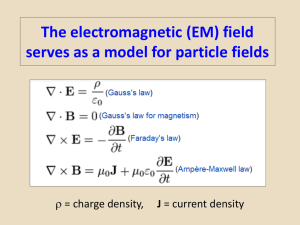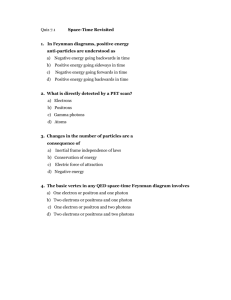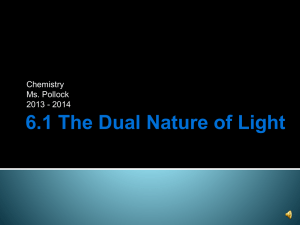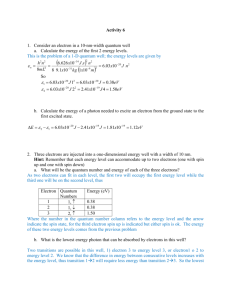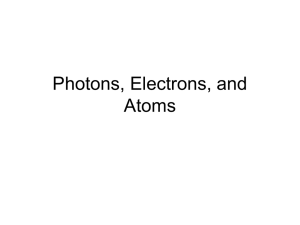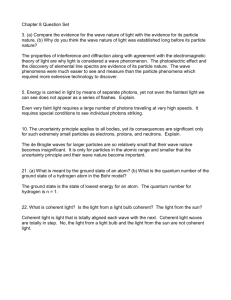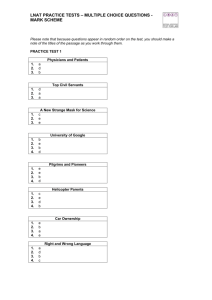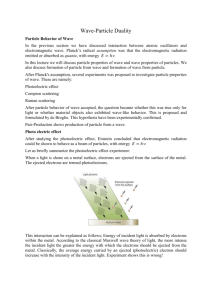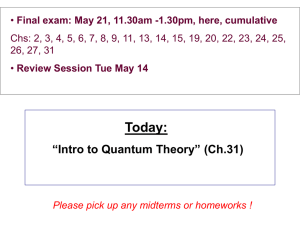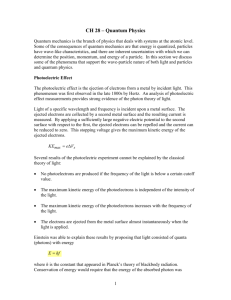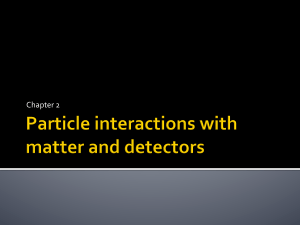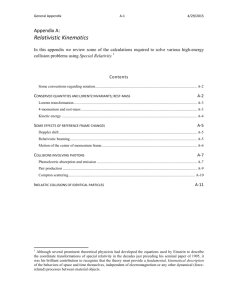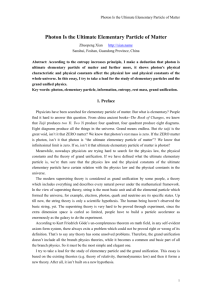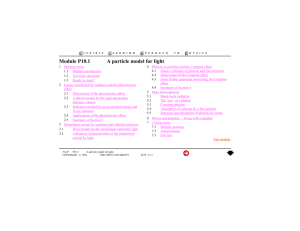Time Region Speeds
advertisement
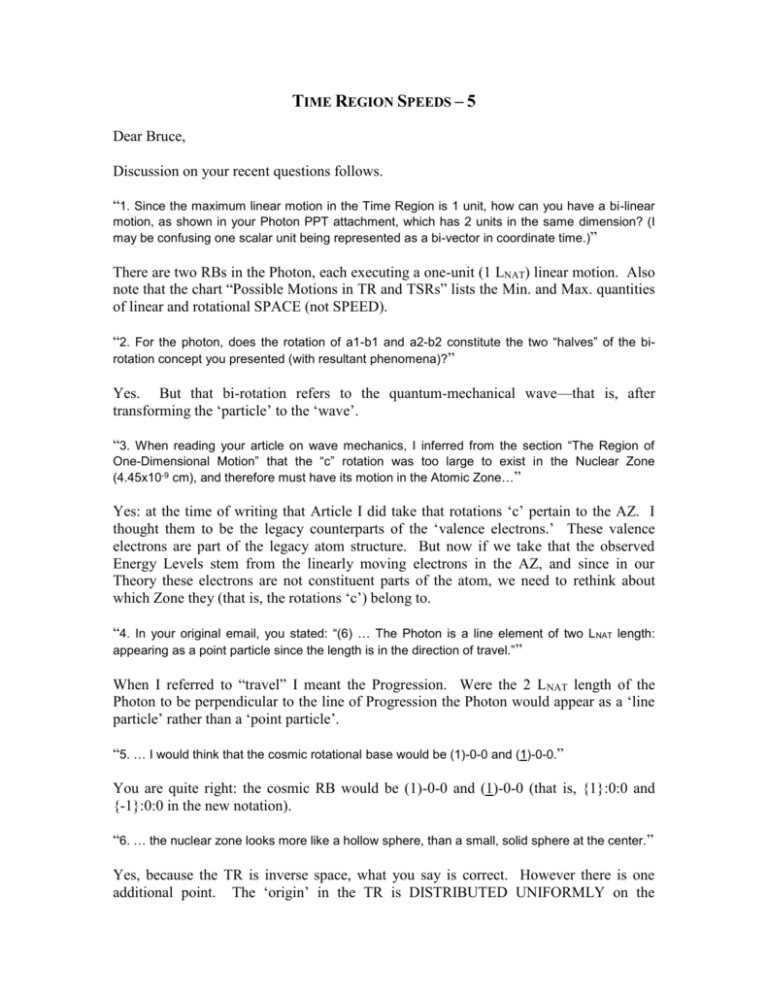
TIME REGION SPEEDS – 5
Dear Bruce,
Discussion on your recent questions follows.
“1. Since the maximum linear motion in the Time Region is 1 unit, how can you have a bi-linear
motion, as shown in your Photon PPT attachment, which has 2 units in the same dimension? (I
may be confusing one scalar unit being represented as a bi-vector in coordinate time.)”
There are two RBs in the Photon, each executing a one-unit (1 LNAT) linear motion. Also
note that the chart “Possible Motions in TR and TSRs” lists the Min. and Max. quantities
of linear and rotational SPACE (not SPEED).
“2. For the photon, does the rotation of a1-b1 and a2-b2 constitute the two “halves” of the birotation concept you presented (with resultant phenomena)?”
Yes. But that bi-rotation refers to the quantum-mechanical wave—that is, after
transforming the ‘particle’ to the ‘wave’.
“3. When reading your article on wave mechanics, I inferred from the section “The Region of
One-Dimensional Motion” that the “c” rotation was too large to exist in the Nuclear Zone
(4.45x10-9 cm), and therefore must have its motion in the Atomic Zone…”
Yes: at the time of writing that Article I did take that rotations ‘c’ pertain to the AZ. I
thought them to be the legacy counterparts of the ‘valence electrons.’ These valence
electrons are part of the legacy atom structure. But now if we take that the observed
Energy Levels stem from the linearly moving electrons in the AZ, and since in our
Theory these electrons are not constituent parts of the atom, we need to rethink about
which Zone they (that is, the rotations ‘c’) belong to.
“4. In your original email, you stated: “(6) … The Photon is a line element of two L NAT length:
appearing as a point particle since the length is in the direction of travel.” ”
When I referred to “travel” I meant the Progression. Were the 2 LNAT length of the
Photon to be perpendicular to the line of Progression the Photon would appear as a ‘line
particle’ rather than a ‘point particle’.
“5. … I would think that the cosmic rotational base would be (1)-0-0 and (1)-0-0.”
You are quite right: the cosmic RB would be (1)-0-0 and (1)-0-0 (that is, {1}:0:0 and
{-1}:0:0 in the new notation).
“6. … the nuclear zone looks more like a hollow sphere, than a small, solid sphere at the center. ”
Yes, because the TR is inverse space, what you say is correct. However there is one
additional point. The ‘origin’ in the TR is DISTRIBUTED UNIFORMLY on the
INSIDE of the sphere of radius 1 LNAT. It is no more a single point as in the conventional
reference frame. Only on implementing the transformation from the ‘particle’ picture to
the ‘wave’ picture can we revert to the conventional reference frame. Only then does
your graphical depiction, “Time Region Zones,” become applicable.
“7. I am assuming that the interaction of particles (electrons, electron neutrinos, etc.) “passing
thru” the atom with net spatial motion all take place in the atomic zone, and that particles with a
net temporal motion interact in the nuclear zone, and add to the compound rotation?”
Yes.
“8. … in the Time Region, linear motion does not exist on its own, but only occurs thru interaction
with other motions.”
Yes. See item (3) of my first communication, “Time Region Speeds.”
“9. Since speed in the Time Region is defined as 1/t2, then would not all linear motion in the Time
Region be observed as accelerated motion?”
I haven’t reached any conclusion on this item yet.
“10. Are the rotations and linear motion in the Time Region “imaginary” numbers, as we would
view it from the Time-Space Region? This would seem to be the case, both with the quaternion
representation, and the electrical concepts of inductance and capacitance. ”
Yes. They would have to be represented either by COMPLEX NUMBERS (having a
‘real’ component and an ‘imaginary’ component) or by QUATERNIONS as the case
might be. This is what I have been saying all through (“Quantum Mechanics as the
Mechanics of the Time Region,” see especially Sections 3.2 and 5.1).
Nehru
